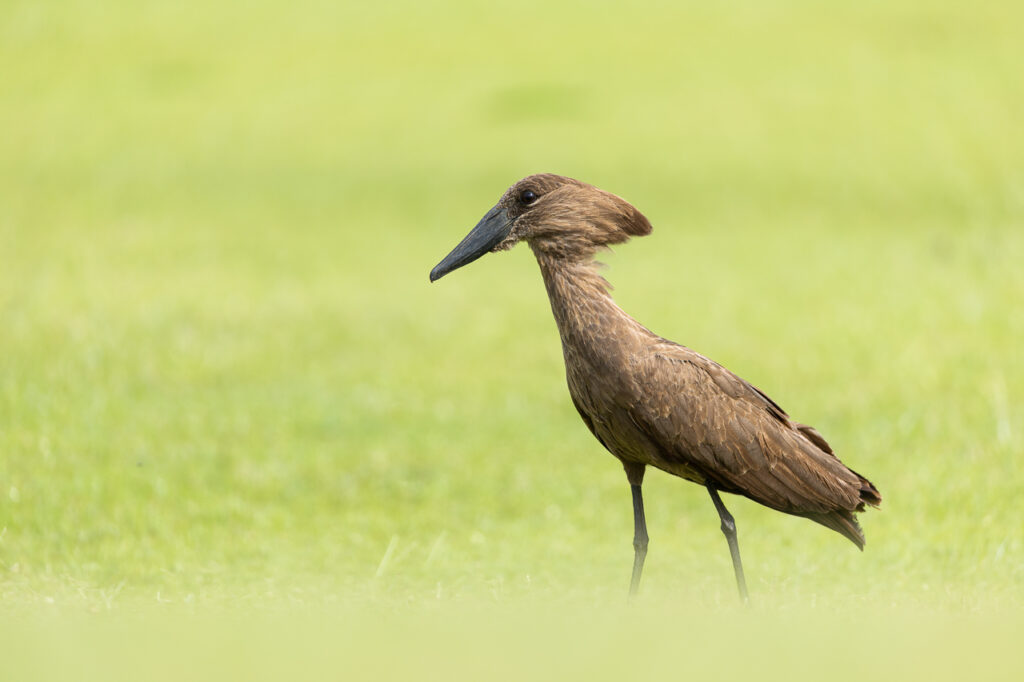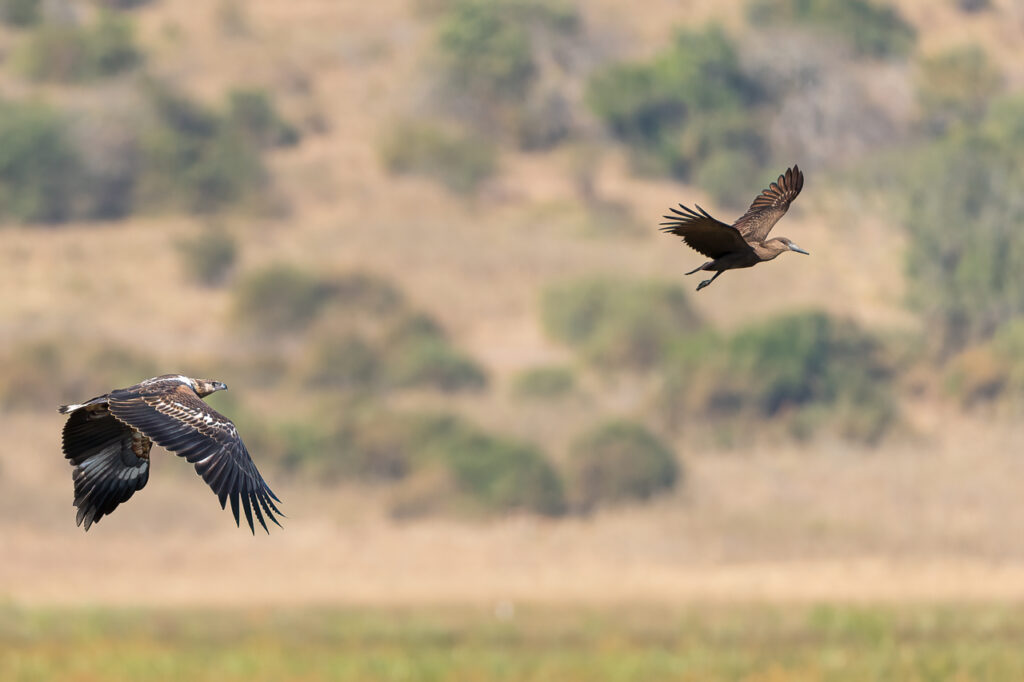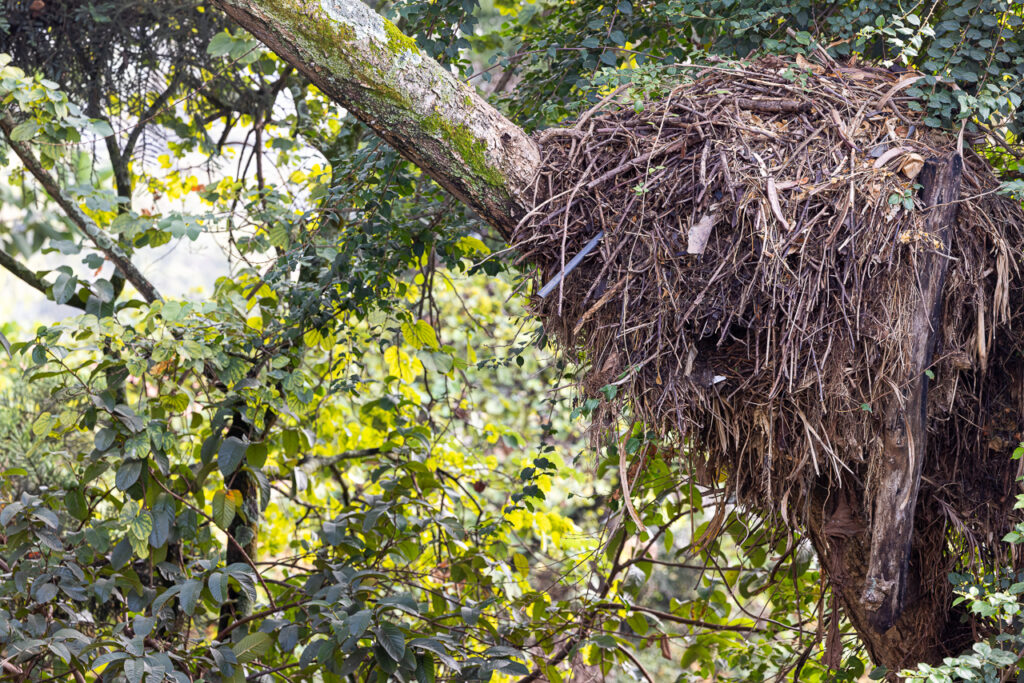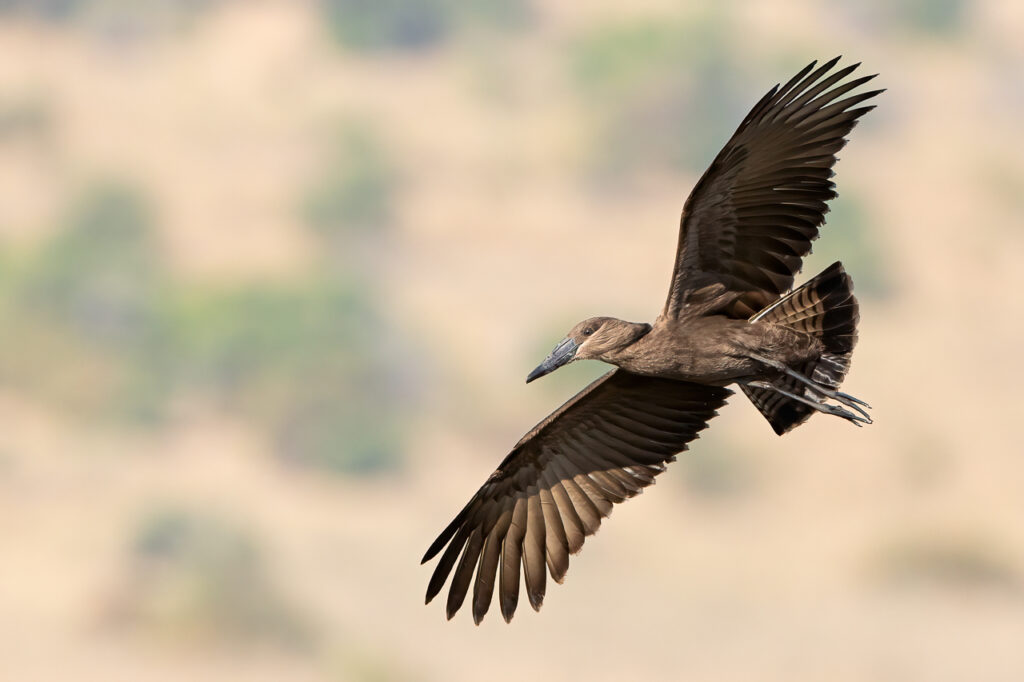Rwanda is home to many remarkable birds, none more so than the Hamerkop. The direct translation of the Afrikaans word from which this bird gets its name is ‘hammer head’, and it’s easy to why they have been given this name when you see the shape of a Hamerkop’s head in profile, the bill on one side and the pointed crest on the other.

Usually found in wetland habitats near shallow slow moving or still waters, including irrigated land such as rice fields, Hamerkops are also found in wet areas in savannahs and wooded areas. Given Rwanda’s unique topography, Hamerkops are often seen in both urban and rural settings across much of the country. I have seen them in Akagera National Park – eastern Rwanda, hunting in Gashora Marsh – southern Rwanda, feeding on the shores of Lake Kivu – western Rwanda, and in Kigali City – central Rwanda. Hamerkops are distributed across much of sub-Saharan Africa and Madagascar.
Their plumage is a rich, dark brown, with a crest of feathers adorning their heads. They have long flat bills, the upper tip is slightly curved. There is no sexual colour dimorphism, so males, females, and juveniles look very similar. However, males can be slightly larger. Hamerkops have relatively short legs compared to other wading birds, and their feet are partially webbed. Similar to herons and some egrets, the Hamerkop’s middle toe is comb-like (pectinated), an adaptation which enables them to groom their feathers. They measure 47–56 centimetres in length and weigh 415–430 grams.

The Hamerkop feeds mainly on small fish and frogs. Relatively short legs mean that Hamerkops are restricted to hunting for prey in shallow water. They wade through the shallows along the water’s edge, like herons and egrets, looking for prey hiding in mud or vegetation. They disturb the bottom sediment with their feet by using a technique called ‘foot trembling’. This technique alongside ‘wing flapping’ scares their prey into the open, where it is spotted by a Hamerkop’s large eyes before it is grabbed by their bill. Hamerkops also feed in flight, gliding over open water and dipping down to grab fish. While hamerkops are good hunters, they often get robbed of their prey by larger birds. I’ve witnessed Hamerkops being harassed and robbed by Yellow-billed Kites at the Kigali Golf Resort and Villas and by a juvenile Bataleur Eagle on the northern plains of Akagera National Park.

Hamerkops form long-term pair bonds, are socially monogamous and are known to duet. Allopreening is also used to strengthen the bond between mates. ‘They are also known for their ‘false mounting’ displays involving one bird standing on another while flapping the wings to maintain balance. This is often accompanied by incessant calling, often in chorus by a number of birds’ (Barnaby 2019, p. 607). Hamerkops don’t have a defined breeding season but will instead rely on the availability of a reliable source of food and a mate to dictate when to raise the next generation.
The Hamerkop is probably best known for the huge nests they build. These are the largest nests in the world for a single pair of birds of their size. The reasons for building such structures is not properly understood, but the building process that is done by the pair is thought to strengthen their bond. The size of the nest may also serve as an advertising beacon, letting other Hamerkops know that the area is occupied. The obvious disadvantage of such a large nest is that it also advertises their presence to others as well… Such structures are resilient to adverse weather conditions and the insulation provided by the densely packed nest might allow the parents to forage for longer periods without having to incubate the eggs.

The enormous nests of Hamerkops are built with sticks, reeds, leaves, grasses, and other vegetation. The structures are woven together and can take anywhere between one and six months to complete. Once completed these two metre by two metre structures consist of thousands of pieces of building material and can weigh up to 50kg! Even after the eggs have been laid the Hamerkops will continue to add material to the structure. The pair will usually build for a few hours in the early morning and then again in late afternoon, during the middle of the day they will hunt and rest. A Hamerkops nest is often built in the main fork of a large tree near water. The downward-sloping entrance to these enclosed structures is usually located low down on one of the sides, facing away from the trunk of the tree. By doing so, access for any predator other than another bird is made very difficult. Avian predators are therefore the major threat to a nesting pair of hamerkops. Owls and other birds of prey often evict them and take up residence themselves! Geese will try to use the roof as a base on which to build their own nests.

Their unique characteristics and behaviours mean the Hamerkop is the only member of their family, Scopidae. Interestingly, there seems to be no consensus on which birds are the hamerkops’ closest relatives. While some authorities have classified them in the pelican and cormorant group, Pelecaniformes, others have placed them into Ciconiiformes, which includes storks, herons, egrets, ibises, and spoonbills. This medium-sized water bird is extraordinary! Hamerkops are residents here in Rwanda, but they are dependent on water to hunt so will make local seasonal journeys to ensure that they have a sustainable food supply. Long and broad wings with ‘finger tipped’ edges mean they can be mistaken for larger birds of prey in flight.

Hamerkops face conservation challenges across much of their range. Given the species reliance on wetlands, waterways and other aquatic environments, habitat destruction and pollution pose real threats to the species. Rapid urbanisation, agricultural expansion and industrial development have led to the degradation of these crucial habitats. As wetlands are drained and converted for human use, Hamerkops and other wetland species lose their homes and hunting grounds, which puts them all at risk. Rwanda has recognised this threat and the City of Kigali is currently in the process of restoring a number of wetlands around the city, Nyandungu Eco-Park is a great example of this ongoing conservation project and an excellent place to see the extraordinary Hamerkop.
Carnaby, T. (2019) Beat About the Bush: Birds, Jacana Media, Johannesburg, South Africa.

